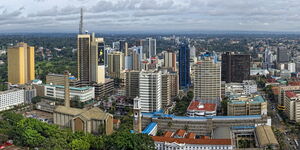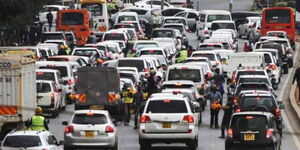The British Government has revealed that it is closely collaborating with the Kenyan government on the rehabilitation and construction of railway networks across Nairobi.
Speaking during a meeting with Prime Cabinet Secretary Musalia Mudavadi, Transport Cabinet Secretary Davis Chirchir, and officials from the G7 countries on Monday, July 21, British High Commissioner Neil Wigan stated that the British Government is awaiting the Request for Proposals (RFP) from the government for the railway projects.
“We are working closely with the government on the expression of interest and are now awaiting the Request for Proposals (RFP) for the Railways project. This collaboration is a clear example of how international partnerships can deliver practical results,” Wigan said.
According to the Transport CS, the government aims to rehabilitate and engineer a total of 165 KM commuter rail line network across the country's capital, which aims to ferry 30,000 people per hour by 2030.
According to Chirchir, the move is part of the government's broader focus on easing urban mobility and decongesting the city. The Transport Cabinet Secretary revealed that the government has given the green light to the proposed 30.5 km Riruta–Ngong–Kiserian–Ongata Rongai line.
"A total of 165 km of existing commuter rail lines are slated for rehabilitation, with new links under planning to expand reach and mobility within Nairobi’s metro zone," Chirchir said.
"The proposed 30.5 km Riruta–Ngong–Kiserian–Ongata Rongai line is one of the most ambitious additions, designed to integrate commuter traffic from rapidly growing satellite towns," he added.
During the meeting, representatives of the G7 countries, Canada, France, Germany, Italy, Japan, the United Kingdom, and the United States, reviewed the progress of flagship transport projects in Nairobi.
According to CS Chirchir, the government is in the process of establishing other multimodal transport systems, including the Bus Rapid Transit (BRT) lines and non-motorised options, which are in various implementation stages.
"The Government plans to evacuate 30,000 people per hour by 2030 via the Nairobi Railway Central Station, a bold target backed by a multi-modal transport ecosystem including commuter rail, BRT, and non-motorised options," Chirchir said.
On the other hand, Prime Cabinet Secretary Musalia Mudavadi affirmed that the flagship projects will also play a key role in the economic transformation of Nairobi and the country at large.
“These projects go beyond easing traffic. They are about building a modern, inclusive, and liveable city that meets the needs of all Kenyans,” Mudavadi said.












